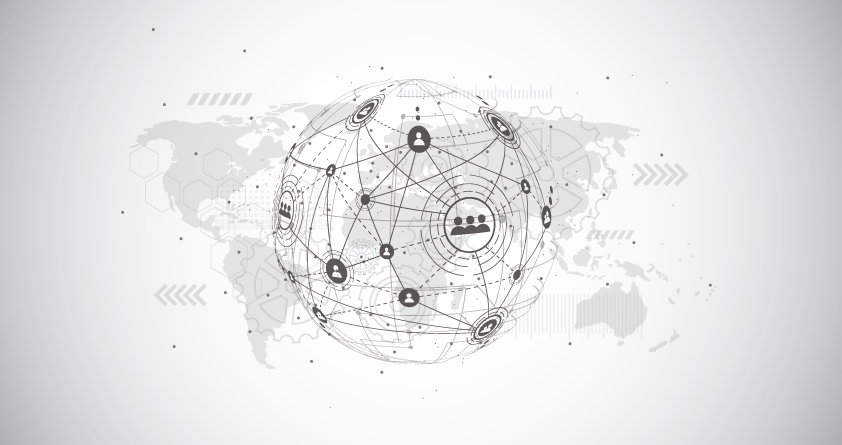8 Data-Driven Tips to Tap into Millennials and Gen Z
Brands are defined by the experiences they deliver. But what makes Millennials click and Gen Zers stick? Let’s explore the consumption patterns of these generations – and how to meet their digital demands.

How Can Generational Generalisations Help Digital Marketers?
When we talk about generational differences, we’re essentially discussing the unique expectations, behaviours, and values shaped in different socio-political climates. For digital marketers, these attributes can be used as identifying factors that steer the outline of your marketing campaigns.
Albeit, these demographic and psychographic traits are stereotypes. But before you’re able to set up customer profiles and build the segment of one, they can provide useful guidance to kickstart your journey towards ultimate relevance.
How to Attract Millennials and Gen Z
The first step in creating a customer relationship is to build awareness and get the person in the funnel. But before we dive into the details, we need to establish the basics and present the generations:
- Millennials (1980-1995) are the new adults and the demographic with the most purchasing power. Born in economic prosperity but with an economic crisis in their luggage, they are sustainable shoppers in both mind and wallet. Fiercely mobile, tech savvy, and highly critical, they tend to consume (customised) experiences over goods.
- Gen Z (1996-2010) is the first generation of true digital natives. From childhood, they’ve been connected to the internet, mobile systems and social networks. Accustomed to a wide variety of information at their fingertips, they are often pragmatic and communicative truth seekers who consume authentic experiences and goods that align with their values.
1. Convenience is key, so provide and predict the next step
Millennials and Gen Zers are notoriously impatient. Brought up in an era of information overload and convenience, they expect seamless shopping, speedy deliveries, and no-fuss customer service.
But how can you accelerate your marketing to meet their need for speed? There are numerous ways depending on your business, but marketing automation is the hero in the ease equation.
Why? Because it uses behavioural triggers to target your audience with content they anticipate to receive. So, rather than contributing to the haphazard bulk emails that clutter the inbox, your customers and leads will get what they expect when they expect it.
Learn more about the power of automation in our B2C handbook!
2. The “woke” generations require inclusive communications
Animal rights, sustainability, LGBTQ+, fair trade, world poverty: Gen Z demands that you take a stand. Want proof? Consider the following stats:
- 48% of Gen Z:ers value brands that reject the stereotypical male and female products.
- 70% try to only purchase products from companies they consider ethical.
- 65% try to learn the origins of a product before making a purchase.
Sustainability is a hot topic that hits the right spot for Millennials. According to Nielsen research, 85% of them believe that it’s extremely or very important that companies implement programs to improve the environment, and 80% of Gen Zers concur. Furthermore, 73% of Millennials are willing to pay more for sustainable products.

But what does this mean for digital marketers? Well, that these consumers are using their spending power to impact the direction of consumption. Albeit, the values held by the generations differ in different cultural contexts, but there’s no doubt that you need to take a stand to land in their hearts.
3. They crave unique experiences, so it pays to personalise
Customised website content, product recommendations and automated perfection: the younger generations want personalisation. As a matter of fact, 58% of Gen Zers would pay a premium for products and services that highlight their identity, and 40% would click on close if a site doesn’t anticipate what they need, like, or want.
However, in order to achieve a truly personalised experience, you need to approach the notion of the single customer. How? By marrying customer profiles with a system for marketing automation. Together, the power couple clears out the advertising clutter by solely providing related and relevant content based on downloads and clicks. No bulk, no spam. Just relevant content.
Want to get on the track towards the single customer view? Check out our platform: Apsis One.
How to Gain the Trust You Need to Gather Data
Most digital marketers are aware of a simple data-driven-marketing formula: The more data you collect, the greater the insights, and the better the decisions. But in order to collect the data you need, you must build enough trust to gain explicit consent.
It’s undeniable that data privacy has been the hot topic over the last few years. The GDPR, Facebook-Cambridge Analytica Scandal, and the e-Privacy Regulation, prompt an era of awareness and scepticism that’s hard to break through. So, how can you get through to Millennials and Gen Zers?

4. Keep it real: Why do you collect data?
The road towards trust is paved with both roses and thorns. We wrote an in-depth post about it here, but lack of transparency is a make-or-break scenario in the trust algorithm – certainly for the notoriously skeptical Millennials.
Thankfully, the solution for transparency is quite simple:
- Provide clear access to your data policy.
- Give a straight answer as to why you collect data, how you collect it and what you use it for.
- Make the what’s-in-for-me abundantly clear.
- Explain your processing in layman's terms, too. The younger generations might view convoluted legal jargon as a cover-up.
5. Use social proofing to lower the fence on advertisement distrust
Millennials are a skeptical bunch that distrust advertisements. They frown upon disingenuity and tend to put their trust into third-party opinions. Why? Because it conveys a sense of neutrality and genuinity.
Gen Zers share the same attitude. However, as the pragmatic communaholics: they are likely to research your company’s values and opinions held in different communities. User-generated content is king.
So, to hedge the bets that Millennials and Gen Zers will trust you, you should push and promote:
- Customer testimonials from different industries that showcase your products or services.
- Customer reviews on your site. This is an absolute must, considering that Gen Zers comb through 3-4 reviews before making a purchase.
Where Do You Reach Millennials and Gen Z?
As a company, it's of the utmost importance that you’re able to meet and greet your audience on the appropriate platforms. So, where do Millennials and gen Z hang? Well, everywhere.

Brought up in an era of hyper-connectivity, it’s second nature to effortlessly switch between channels and devices. But what habits set them apart from Baby Boomers and Gen X?
6. Social media is key, so supercharge your presence
Millennials and Gen Zers are true social media mavens that influence and are influenced by social content. Gen Z, known as the communicative generation, actively seek out brand interactions and co-create brand perceptions in communities. Case in point: 64% of Millennials follow one or more brands on social media, and the number for Gen Z is 73%.
Consequently, it’s critical that you’re present and active on your social media channels. But as we all know, data is key. So, if you want to go beyond the “like” and get a friend request, you should personalise your matched audiences with the help of a CDP. Read more about it here!
7. They’re highly mobile, so be mobile friendly
Growing up plugged, constant connectivity is compulsive for Gen Zers and Millennials. As a matter of fact, 43% of them check their phones every 20 minutes, a majority of them have finalised purchases through smartphones, and 31% of Nordic shoppers have researched a product before entering a store.
In the marketing sphere, this marks a massive paradigm shift in consumption patterns. So, how can you reach your mobile customers?
Apart from implementing a responsive website design, you should look into how to integrate smartphones into your marketing strategy. Could SMS marketing reach customers on the go? Or can you use SMS in your marketing automation flow? The sky’s the limit!
8. Customer journeys are anarchic, so unify the experience
The younger generations are channel hoppers. Not only between Instagram on a smartphone to a website on a desktop, but also between online and offline. A statistic that paints a pretty clear picture is that 40% of Swedes research and compare products while in-store.
For businesses, fleeting consumption patterns means hard work. When touchpoints converge, the importance of omnichannel marketing and a unified organisation is cemented. This requires strong internal collaboration to map out the customer journey and a system that aggregates your customer data into customer profiles.